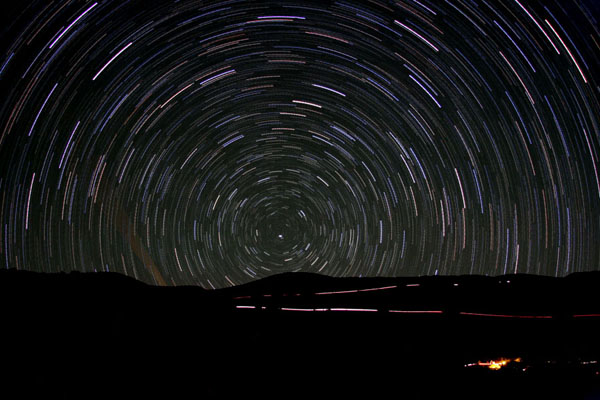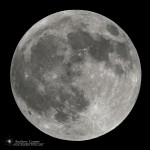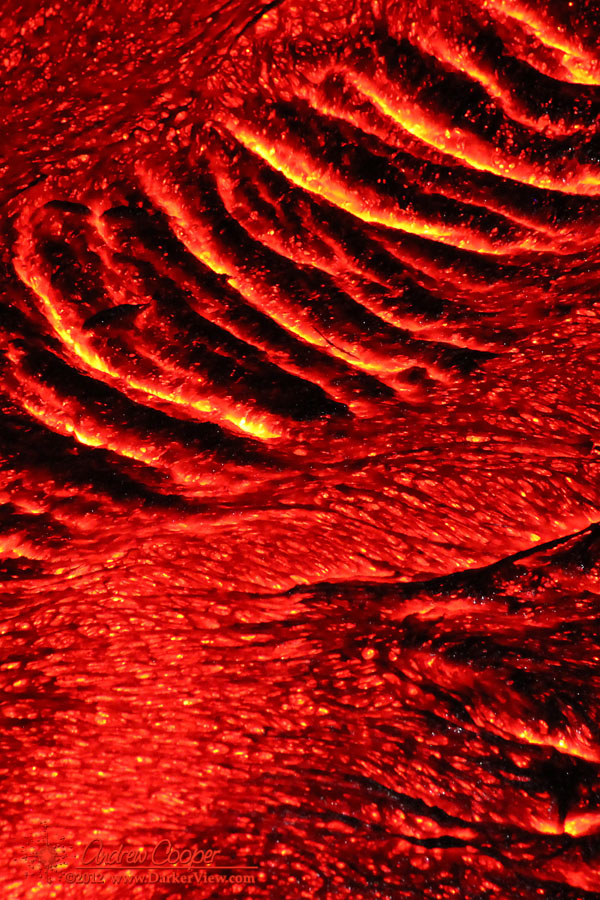
Mercury at Maximum Elongation
Today Mercury reaches maximum elongation, the furthest point it will reach from the Sun in the sky and the highest it will be above the sunrise for this morning apparition. The planet is easily visible as a bright, starlike object about 28° above the rising Sun as the twilight begins. Over the next couple weeks Mercury will slide back into the sunrise, heading for superior conjunction on May 11th.
Living with Cats
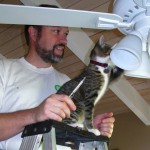
Our previous cats had moved from the mainland with us. A year ago we lost both in a short span of time. It was not really a surprise, both were older cats and had been with us for many years. But still, loosing such longtime companions was hard. It was a while before we brought new cats into the house, over three months. But eventually a pair of pound kittens from the local humane society were bouncing around our home.
Two active kittens, now young cats are quite the change from two sedentary, elderly cats. Life is quite a bit livelier around the house. We have had to kitty-proof many things that were in no danger before. Anything with a cord has to be put away, certainly not left dangling over the edge of a table or desk. So far I have had to replace two headphone cables and one Apple charging cord. At least I can easily solder a new cord into something.
Any small creature that ventures into the house is in mortal danger. Cockroaches? Large ants? Played with until dead and then eaten. Geckos foolish enough to use the floor? Now tailless. We have not yet encountered a centipede, something I worry about a bit. The monsters we have around here can be six inches long and pack a serious sting.
Having my feet attacked under the bed covers, a streak of grey fur wizzing past as I sit at the kitchen table, being greeted at the door when returning from work, a cat curled up beside me, purring as I read the daily news… These are the things I enjoy, and really do not want to be without.
Mauna Kea Employment
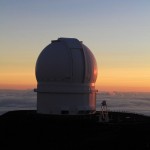
The site does not identify who is assembling the information, but it does seem to be accurate, the current Keck listings are there. I found the site through a prominent link on the MKSS website. It appears to be official, but oddly enough is privately hosted at GoDaddy, not a UH or observatory server, need to see who is putting this together.
Papaya
Full Moon
Keck Open House
I suppose I should do a write-up of Keck Week. It has been a week since the event wound down. But… That was a massive whirlwind of activity, way too much to do, I am just now exiting decompression mode.
I am not the only one attempting to recover. I stopped by Debbie Goodwin’s office Monday. Her desk is piled with follow-up work, her usually neat office a bit of a wreck. The same story everywhere around headquarters, the remains of open house litter the complex, slowly disappearing as folks clean up and put away. At least the conference room had tables and chairs for Tuesday’s AO Team meeting.
We are still awaiting the numbers, visitors to open house, donations, etc. But even without data I think we can call the event a total success. It was huge in any case, turnout for open house was somewhere in the 1,500 to 2,000 visitor range as expected. What I do know was the reaction I got as I walked about the events.. A lot of happy folks! Everyone was having a good time.
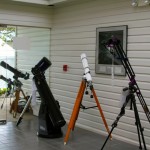
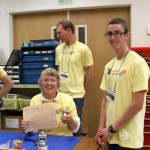
It is a lot of fun, and a lot of work. It is a real treat for the community. With the enormous effort we will not be doing this every year. The last open house was three years ago, it will probably be that long before we do it again.
A Programmable Current Source
The usual engineering minutia takes up much of my week… Paperwork, documentation, purchase orders, meetings, etc. There are the occasional chances to just have a little electronic fun. Thus I greeted a request from a couple of our support astronomers with some enthusiasm. They needed a variable intensity light source for calibration of the OSIRIS spectrograph. This source sits inside an integrating sphere on the AO bench along with four spectral sources, small tubes of neon, argon, xenon and krypton.
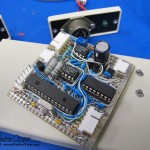
I set aside a bit of time each day to design and build the source. The last couple hours of the afternoon are best, at this point I have had quite enough paperwork. A chance to practice my trade sketching out the circuit, or simply sitting at the bench and soldering… Perfect.
Substation Observing Site
Another site that allows an amateur astronomer to take advantage of the pristine skies of Mauna Kea is located next to an electrical substation just a couple hundred yards east of the Mauna Kea Visitor Information Station. Here you can enjoy a truly spectacular sky above the tropical haze and VOG of lower elevation Hawaiian locations. Far from the modest lights of Kona or Hilo there is almost no light pollution and the tropical inversion layer often keeps the clouds and rain well below this mountain site. While the site may see some early evening use by sunset watchers and possibly a tour van doing a star tour for their guests the majority of the night will offer an escape from the crowds across the road leaving the observer alone to enjoy the universe.
View Larger Map
The Substation site has some advantages and some disadvantages…
- A dark site away from the lights and crowds if the VIS, but still nearby if you are to need access to the VIS bathrooms.
- An open cinder area with enough room for twenty or more vehicles and telescopes.
- The site is occasionally used by one or two of the summit tours to allow their guests a look through a telescope. This will usually take less than an hour before they pack up and leave.
- Sunset viewing guests from the VIS cross the area to access the pu’u to the south where sunset may be viewed with a clear view of the western horizon.
- The small pu’u to the south will block some of the southern sky.
- If there is a east or west wind it can come through the saddle across the site making conditions less than ideal.
- The site lies on DLNR administered land and is subject to DLNR rules. Camping is not permitted, where camping is defined as possession of “camping paraphernila” after dark. Make sure you do not have a tent, sleeping bag or other obvious camping gear along. In practice this has never been enforced at this site.
The VIS is more sheltered as it is below the small ridge and offers a somewhat better southern horizon.
The site is easily found by turning off the main road just below and opposite the entrance to the Mauna Kea VIS. A break in the guard rails provides access to a short gravel road that proceeds straight up the hill to the saddle and the substation.
